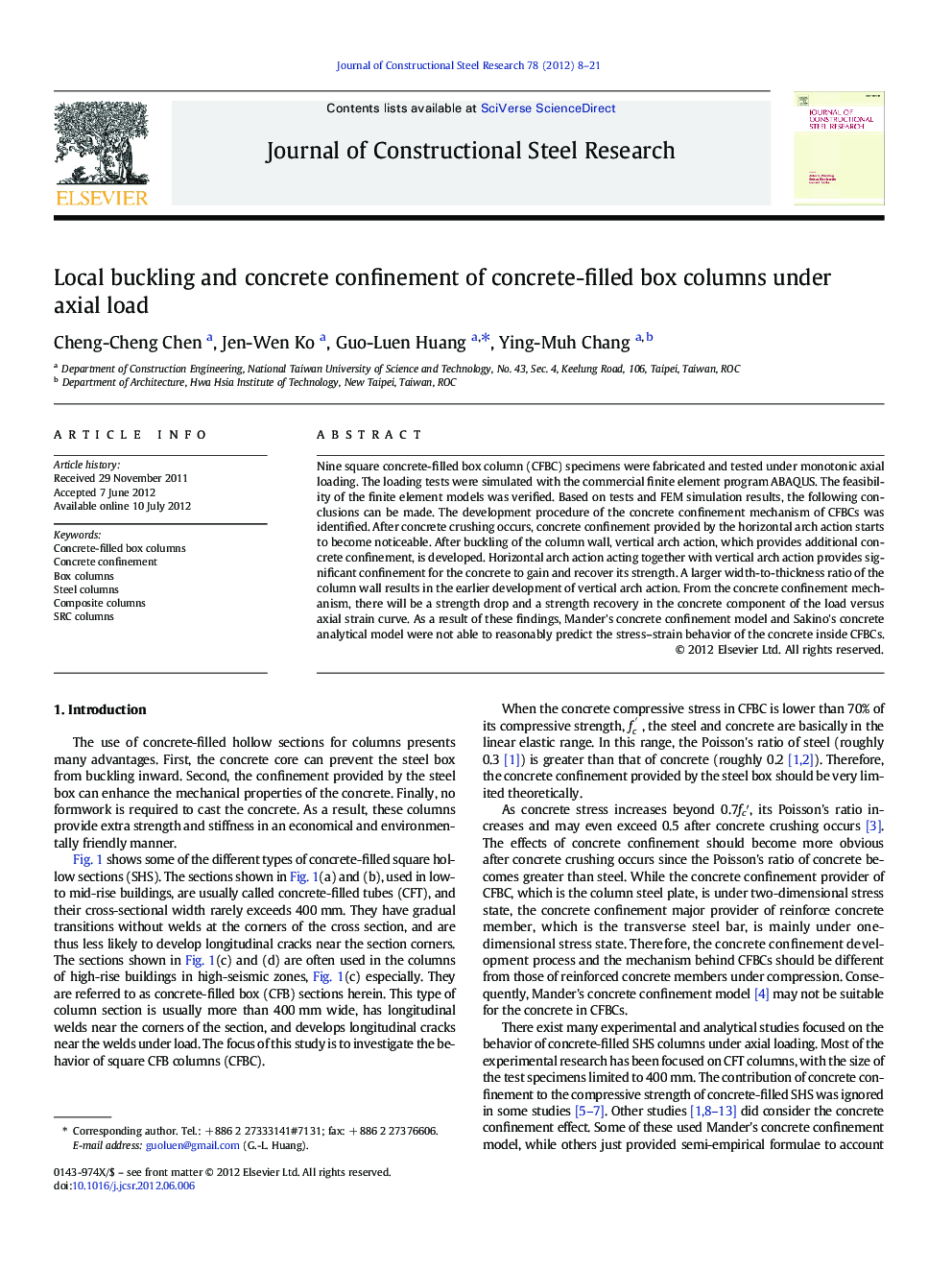| Article ID | Journal | Published Year | Pages | File Type |
|---|---|---|---|---|
| 285084 | Journal of Constructional Steel Research | 2012 | 14 Pages |
Nine square concrete-filled box column (CFBC) specimens were fabricated and tested under monotonic axial loading. The loading tests were simulated with the commercial finite element program ABAQUS. The feasibility of the finite element models was verified. Based on tests and FEM simulation results, the following conclusions can be made. The development procedure of the concrete confinement mechanism of CFBCs was identified. After concrete crushing occurs, concrete confinement provided by the horizontal arch action starts to become noticeable. After buckling of the column wall, vertical arch action, which provides additional concrete confinement, is developed. Horizontal arch action acting together with vertical arch action provides significant confinement for the concrete to gain and recover its strength. A larger width-to-thickness ratio of the column wall results in the earlier development of vertical arch action. From the concrete confinement mechanism, there will be a strength drop and a strength recovery in the concrete component of the load versus axial strain curve. As a result of these findings, Mander's concrete confinement model and Sakino's concrete analytical model were not able to reasonably predict the stress–strain behavior of the concrete inside CFBCs.
► Nine concrete-filled box columns were tested under monotonic axial loading. ► Finite element model was established to simulate the behavior of the specimens. ► Development procedure of the concrete confinement mechanism was identified. ► Concrete crushing and column wall buckling are key factors of concrete confinement. ► Mander's and Sakino's models are not suitable for concrete inside steel boxes.
